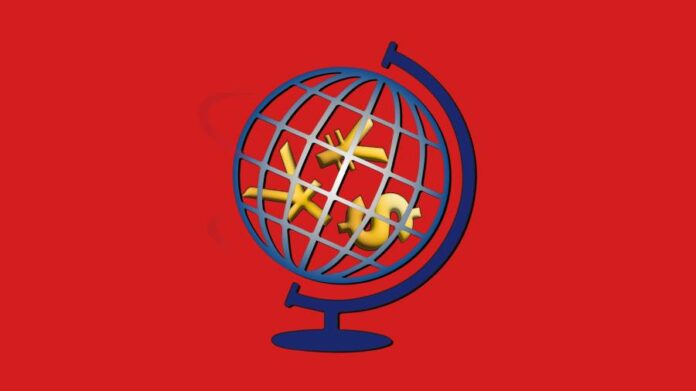Here we go again. Last month, the American S&P 500 jumped 7 per cent, supposedly because investors started to think (or hope) that lower inflation rates would slow Federal Reserve rate rises.
On Tuesday, however, US equity markets suffered their biggest fall for two months, as strong economic data sparked a welter of market chatter about the prospect of more tightening from the Fed.
That dragged other indices down and intensified arguments between those observers (such as Morgan Stanley’s research team) who view January’s market euphoria as overdone and those (such as Jim Cramer, the celebrity host of Mad Money) who think it is the market bears who are “in denial”.
This debate will undoubtedly run and run, particularly since the latest Fed minutes suggest that even US central bankers weren’t entirely unified about the outlook. However, while investors obsessively wait for the next batch of economic data or the latest words of Fed chair Jerome Powell, they urgently need to cast their gaze wider as well — towards what is happening with big central banks outside American shores.
This is not something that US television luminaries and pundits often do. No wonder: American investors (and voters) are famously myopic, and journalists are trained to explain market swings in terms of hard economic and corporate news. But right now those oft-ignored, worldwide central bank flows really do matter, since something rather surprising — if not counterintuitive — is going on.
Most notably, since last spring the Federal Reserve has tried to combat inflation by raising rates and moving from quantitative easing to quantitative tightening. Thus the Fed balance sheet shrunk from $8.96tn in April to $8.38tn today. This was initially primarily due to declines in commercial banks’ reserves, but more recently it has been because the Fed has run down securities.
Economic logic might suggest that this American QT should have created tighter financial conditions. But this is not the case. An unexpected wrinkle of recent months, which has complicated the Fed’s policy challenge, is that the Chicago Fed’s national financial conditions index has dropped to minus 0.45, compared to minus 0.13 last September. (A more negative number represents greater loosening.)
Why? One reason might be investor optimism about growth. But a far more likely culprit, says Matt King, Citi’s Global Markets Strategist, is non-US central bank flows. For even as the Fed’s balance sheet has been shrinking, the People’s Bank of China has been pumping more liquidity into the system and the Bank of Japan has maintained its so-called yield curve control policies.
Meanwhile, the behaviour of the European Central Bank has been somewhat unexpected. Like the Fed, the ECB has been raising rates, with more to follow. But its balance sheet has marginally increased, due to some arcane shifts in government deposits.
The net result, Citi calculates, is that these three central banks have collectively pushed almost $1tn of additional liquidity into the global system since October (when adjusted for exchange rates). This more than offsets what the Fed has done. Call it, if you like, some accidental anti-QT.
And King thinks that this trillion-dollar boost helps to explain January’s stock surge. His historical models show that in recent years, “there has been a 10 per cent gain in equities [in MSCI world and S&P]” for each $1tn of new liquidity supplied by central banks.
Torsten Slok, chief economist at Apollo, agrees. “BoJ purchases of Japanese government bonds to keep yields low are now bigger than Fed QT,” he says. “The result is that central banks are once again adding liquidity to global financial markets, which [likely] contributed to the rally in equities and credit in January.”
If this analysis is correct (as I think it is), it raises another trillion-dollar question: will this anti-QT last and keep supporting asset prices? King thinks not, and expects markets to soften this year. One reason is that the PBoC is unlikely to loosen policy further because Chinese officials do not want to stoke more real estate bubbles. Another is that the BoJ will come under pressure to reduce its yield curve control policies when it changes governor in April.
But there are some very big wild cards in the pack. The Fed could face pressure to slow QT if there is a US debt ceiling crisis. Flows around commercial bank and government reserves could turn even more surprising at the ECB and other central banks. After all, as economists such as Raghuram Rajan have noted, given that QT has never been conducted before on this scale, the plumbing around this process is untested and unclear.
More important still, nobody knows whether the BoJ will really have the courage to exit yield curve control, since the man slated as the next governor — Kazuo Ueda — has said remarkably little about QE recently. This matters for many asset classes. To cite just one example: higher rates in Japan could well prompt its investors to reduce holdings of non-Japanese fixed income, influencing US bond prices in turn.
So the key point for American investors is this: even as they track inflation data, corporate earnings and Fed speeches at home, they need to watch what people like Ueda do too. Maybe Cramer should host his next show from Tokyo or Beijing.






